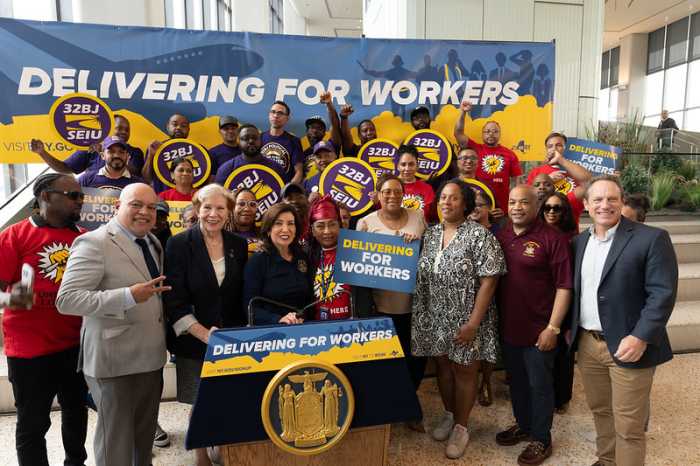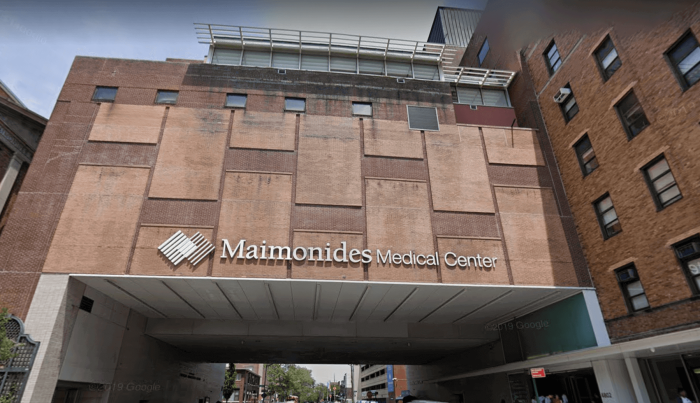By David Stanke
A series of unfortunate events have left the World Trade Center site an empty pit nearly four years after the attack. As painfully obvious and symbolically significant as this is to those with a daily view of the site, the outside world has only recently become aware of the problem. The issue broke with the pullout of Goldman Sachs from a plot just off the W.T.C. site. Sen. Chuck Schumer then leveled criticism at Gov. Pataki for the delays. Mayor Bloomberg added fuel to the fire by charging that security concerns had been ignored. Donald Trump, the master publicity machine, fanned the fires into a blaze with his reintroduction of the “Rebuild the Towers” movement. Finally, Assembly Speaker Sheldon Silver delivered a clear and focused plan of action that addressed the real issues and squarely acknowledged the serious challenges facing the recovery of Downtown Manhattan. Building parks is all well and good, but it can’t substitute for refilling one big hole at the spiritual and economic center of Lower Manhattan.
The most immediate issue for the W.T.C. is who should be driving this project of national significance forward. There is such a complex web of interactions that the bogged down efforts should not be a surprise. Reviewing the performance and positions of various players over the last four years, there is no white knight in sight to save the day.
George Pataki, despite poor performance and numerous mistakes, is the only man for the job. His long overdue addition of John Cahill to oversee Lower Manhattan could quickly right this listing ship. But tough issues must be faced and past mistakes reversed. Speaker Silver, as a representative of the W.T.C. district, has been on target in recognizing real issues. He has effectively maneuvered behind the scenes, but he should be given an official and permanent role in all decision-making concerning the site. Some seats on the Lower Manhattan Development Corporation board and any future decision-making bodies, should be transferred from Pataki and Bloomberg to Silver, more appropriately balancing the concerns of state, city, and local communities. Rumors of disbanding the L.M.D.C. may be premature. A wide-range of decisions regarding the site are still in play.
Pataki wants to have the W.T.C. as his legacy. To do this, he has to be a leader and do the painful work of overriding those whose fundamental purpose is to prevent the site from ever being rebuilt. Instead he has avoided responsibility for the tough decisions behind his front organization, the L.M.D.C. He has over-ridden his experts at critical junctures in favor of directions that would create the least publicity flack (read: Daniel Libeskind site plan). Even in this latest publicity crisis, when everyone has focused on rebuilding, Pataki’s most significant action was to throw $300 million at the memorial.
The role of Mayor Mike Bloomberg, with his demonstrated lack of focus on the W.T.C., should be dramatically diminished. He is dedicated to the West Side Stadium and his actions at the W.T.C. site demonstrate negligence at best, and negative intent at worst. The two most noteworthy contributions to site design by the mayor and his appointees are directly in conflict with each other. First they have insisted that Greenwich and Fulton become vehicular streets, and are pushing for additional streets between Church and Greenwich. Second, for security concerns, they want to keep vehicles away from the commercial buildings on the site. If building security is critical, public vehicles must have limited access to the site, like they did before 2001. Consider the Freedom Tower that is being relocated further from West St. How will it be protected on Fulton and Vesey Sts.? Will the terrorists not know how to turn right off West Street with their suicide bombs? The only real security for the W.T.C. is a 16-acre super block, like it was before 9/11/2001. The timing of the complaints about Freedom Tower security in relation to approvals of the stadium and Bloomberg’s failure to more appropriately escalate these issues before going to the press suggest less than straightforward motivations.
Bloomberg says that Downtown can survive without Goldman. I’ve got news for him. New York City can survive much easier without the Stadium or the Olympics.
The best parts of the future W.T.C. have been designed without a “democratic process” and without listening to the people. The Port Authority commissioned the widely-acclaimed Calatrava PATH station, rewrote the Libeskind vision for the area, and miraculously escaped criticism.
The International Freedom and Drawing Center Building is a L.M.D.C. success. Snohetta, a Norwegian firm, designed this building on commission. The work was done without public oversight, and yet it has received negligible criticism. It is a great design that will add to the site and the memorial. It is another sign of the L.M.D.C. learning as it moves forward.
The L.M.D.C. has done a stellar job at what it is assigned to do. It has to balance diverse, determined, and opposing interests to get the site developed. But foot soldiers more often end up dead than heroes. Employees of the L.M.D.C. show up at meeting after meeting to take emotional and personal criticism. Some is based on real challenges, and some on raw self-interest. For these people to keep showing up, collecting “public” opinion, and moving forward is a heroic task. Kevin Rampe is a prime example of the personal cost of a job at the L.M.D.C. While I had my own confrontations with him early on in the process, he played a solid role in standing behind the decisions and moving planning forward. It is unfortunate that he is no longer president of the L.M.D.C.
Silver has realized, better than any other leader, that rebuilding is a human issue, perhaps more than an issue of steel and concrete. An empty building revitalizes a city no more than a hole in the ground. The W.T.C. needs a critical mass of activity, both building and people, to turn the despair of devastation into the hope of new city. To achieve that critical mass, we need a solid commitment by big organizations to locate to the site. Devastated buildings must be removed and new buildings occupied. Everything would benefit from active retail on site. The residential scene has already recovered and needs no direct subsidy. Downtown now needs to fortify its business foundation, and for that, Goldman Sachs and government organizations are critical. Silver’s “Marshall Plan” approach is precisely the imagery necessary to establish positive momentum. We need an action plan that goes beyond more funding for a memorial and a couple of parks.
Despite the efforts to create positive press, the real issues at the W.T.C. site are still unresolved. Cahill shows signs of moving in the right direction. He is finding ways to get progress on Deutsche bank started. He is focused on Goldman Sachs and rail link from Kennedy to Downtown. But of the $800 million spending of community development money, $300 million will go to the memorial that has little to do with Downtown development. Pataki is still lost on the notion that the success of the W.T.C. depends on the Memorial. That said, the players are in place to get the W.T.C. going. The biggest issue now, as it was three years ago, is vision and execution. To date, efforts to resolve the real problems equate to giving a manicure to a cancer patient. Things look better, but the patient is still very sick. For better or worse, we will see if Pataki has what it takes to get the program back on track.
David Stanke, a Downtown resident, serves on an advisory panel to the Lower Manhattan Development Corp. and frequently writes on Lower Manhattan issues.
WWW Downtown Express































